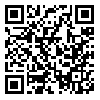BibTeX | RIS | EndNote | Medlars | ProCite | Reference Manager | RefWorks
Send citation to:
URL: http://sjsph.tums.ac.ir/article-1-5326-en.html

 , Abbas Vosough Moghaddam *
, Abbas Vosough Moghaddam * 
 2, Kamel Shadpoor3
2, Kamel Shadpoor3 
 , Mohammad Hossein Salarian zadeh4
, Mohammad Hossein Salarian zadeh4 
 , Davood Moghimi5
, Davood Moghimi5 

2- MD-FFPH. Assistant Professor, Health Sector Policy Coordination Group, In charge of Minister for Policy making Affairs Bureau, Ministry of Health and Medical Education, Tehran, Iran ,
3- MD-MPH. Independent Health system Expert, Tehran, Iran
4- MD-MFPH. Director of Intersectoral Planning Department, In charge of Minister for Policy making Affairs Bureau, Ministry of Health and Medical Education, Tehran, Iran
5- MD-MPH. Deputy of Public Health, Alborz University of Medical Sciences and Health Services, Karaj, Iran
Background and Aim: One of the main functions of municipalities, as a social institution, is providing, maintaining and improving health of citizens. Scattered attempts have been made with the objective of expanding equitable health service networks in cities, particularly suburban areas. The present study aimed at designing an integrated system for urban health managent center.
Material and Methods: This was a descriptive-analytical study. Based on the viewpoints of experts and relevant stakeholders, global evidence, national experience, and existing legislations, a conceptual framework for designing an urban health management center was developed and requirements for its implementation were determined. On the basis of the conceptual framework, regulations for designing model for a regional urban health management center (RUHMC) was prepared.
Results: The proposed model has 5 important characteristics which would provide an excellent opportunity as a response to the existing challenges of the health network in cities through active participation of the municipality, as a social institution, and other organizations:
1. Facilitating intersectoral collaboration, as against individual movements of the
governmental health sector;
2. Defining and providing social health services and influencing the social determinants of health components;
3. Providing active, rather than passive, services;
4. Decentralization by forming a board of trustees and/or coordination council;
5. Direct community participation in all phases, from decision-making (membership in the coordination council) to service provision.
Conclusion: Pilot implementation and evaluation of the proposed RUHMC model is recommended before expanding it to other parts of the city. In addition, it is essential that, before expanding the model to the other cities, the final regulations be examined and ratified by the High Council of Health and Food Security.
Received: 2016/03/8 | Accepted: 2016/03/8 | Published: 2016/03/8
| Rights and permissions | |
 |
This work is licensed under a Creative Commons Attribution-NonCommercial 4.0 International License. |



